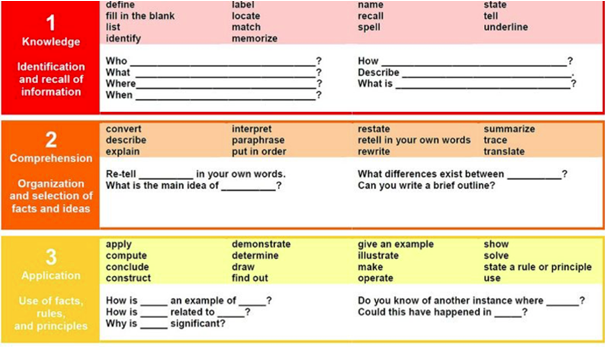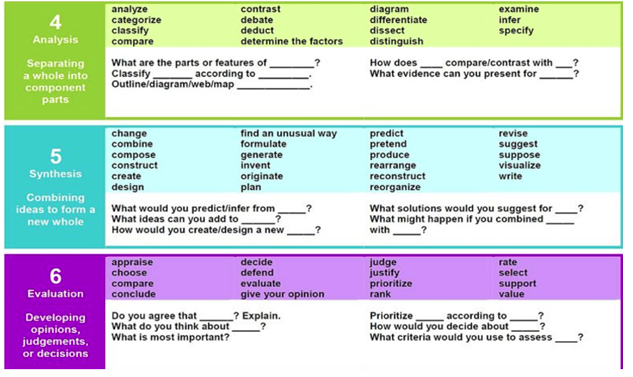Christina Cavage is an English as a Second Language (ESL) professor and an expert in blended learning. She has authored several textbooks and papers, and hosted a series of webinars on critical thinking and assessment in the ESL classroom.
In this series of blogposts, Christina examines how we can incorporate critical thinking into our language classrooms, in order to help our learners build their academic skills alongside their linguistic proficiency.
There are some common myths related to critical thinking and assessment. Many people believe that it’s impossible to assess critical thinking, especially in classes where language is limited. However, it can be done! Here, the key to success is crafting tasks and rubrics that allow you to separate language skills and cognitive skills. After all, a low language level doesn’t necessarily reflect your students’ ability to think critically.
So, how can we measure how a student knows rather than just what they know?
How to measure critical thinking
Well, we first have to consider two types of assessment—formal and informal. Formal assessments tend to happen at the end of a task, lesson or skill-building activity, and usually focus on the work the student has produced. Then, we have informal assessments. Those are the assessments that involve on-the-spot interactions. These types of assessments play a crucial role in measuring critical thinking.
Formal assessment
There is a common misconception that assessment should only focus on the final work that your students produce. The final ‘product’ is undeniably important, and often an ideal measure of linguistic abilities. But the process of producing the final work is where you can see your students’ critical thinking skills in action.
When designing rubrics to measure both language and critical thinking, make sure that you only focus on one at a time—either language or critical thinking. Keeping these different skills in mind will help you to differentiate language skills and critical thinking skills, and evaluate them separately, when it comes to formal assessment.
When measuring language skills, use Bloom’s early or foundational cognitive domains as a model:
If we measure these items, we are really measuring language skills. For example, with a reading activity, we might ask the following questions:
- Who is the story about?
- Where does the story take place?
- What is the main idea of the story?
Can they understand the overall organization and the key vocabulary? These types of questions assess a student’s linguistic ability.
Then, when it comes to critical thinking, the more advanced levels of Bloom’s cognitive domains provide a useful guide:
These types of questions assess a student’s metacognition, or critical thinking:
- Which character is most important to the story?
- Why?
- Do you agree or disagree with the character’s actions?
- Why or why not?
The clear separation of language and critical thinking in assessment will help you to get a measure of each student’s progress in both skills.
Informal assessment
What about those informal assessments? It can be harder to delineate critical thinking and language skills clearly in an on-the-spot assessment.
For example, if you’ve assigned group work, consider keeping a checklist of how students interact with one another. Some checklist items can be:
- Who made an inference?
- Who supplied reasoning for another student’s idea?
- Who made a comparison?
- Who drew a conclusion?
You can also ask your students to keep a checklist, and post these questions on an electronic bulletin board. Like self-assessment, these peer-to-peer assessments can get students reflecting and noticing.
Rubrics can also be useful in informal assessment. Let’s say you’ve asked students to prepare or write an essay. To measure critical thinking, you can look at each student’s ideation process when they’ve been working on their essays:
- Is a student looking at all possible topics?
- What are the factors that make a student select the option they did?
- Are they demonstrating an awareness of other ideas?
The answers to these questions will tell you whether or not your students are thinking critically.
Just like with any other skills, the assessment of critical thinking needs to happen both formally and informally. We need to consider both the process and the final product. And in doing so, we need to carefully design rubrics that differentiate language skills and metacognition.
Learn more
You can learn more about critical thinking with Christina’s webinar series. Listen to her interview about the importance of critical thinking in the ELT classroom on our podcast. And for some practical activities to try out in your classroom, read Christina’s blog post on how to teach critical thinking.
The post Build Success Beyond the Classroom: Critical Thinking and Assessment appeared first on Resources for English Language Learners and Teachers | Pearson English.
from Resources for English Language Learners and Teachers | Pearson English https://ift.tt/2Rx56bT
via Learn Online English Speaking


Comments
Post a Comment